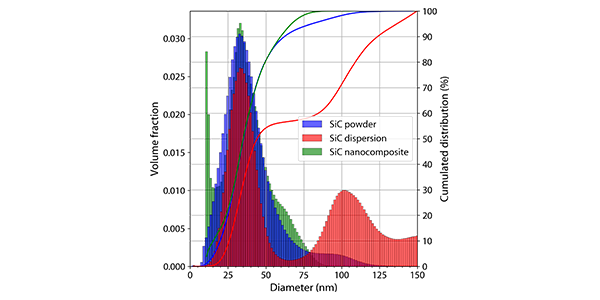Size distributions of industrial nanoparticles have been determined in various forms for
quality assessment and process monitoring.
Introduction
Nanoparticles are being produced at an increasing rate and have become an essential building block for the development of new materials with improved properties. The performance of the final products depends not only on the chemical nature of the nanoparticles but also on their size, and on the ability to maintain a dispersed state throughout the processing stages.
Small Angle X-ray Scattering (SAXS) is a non-destructive technique allowing material structure determination in the range 1-250 nm with minimal sample preparation. It provides statistically relevant information over a large volume (typically 1 mm3). As such, it is an ideal complement to microscopy techniques which provide only local information. While SAXS is traditionally used for narrow size distributions on well-defined laboratory batches, this application note demonstrates how SAXS coupled with a unique data analysis algorithm can be applied successfully on industrial batches of nanoparticles at various process steps.
Nanomakers is a manufacturer of nanosized particles and nanocomposites. SAXS is the only technique allowing precise nanoscale size determination of dry powders, dispersions and nanocomposites, providing Nanomakers with nanostructural information throughout the entire production chain.
Measurements & results
A batch of SiC powder produced by Nanomakers (modal size 33.5 nm according to transmission electron microscopy) has been characterized in three different forms using the Nano-inXider. […]
After data reduction, the experimental scattering profiles were fitted using the Expectation Maximization algorithm (EM)4 implemented in the XSACT software from Xenocs to determine the size distribution of the nanoparticles.
Size distributions determined from SAXS data are shown in Figure 1. […]



